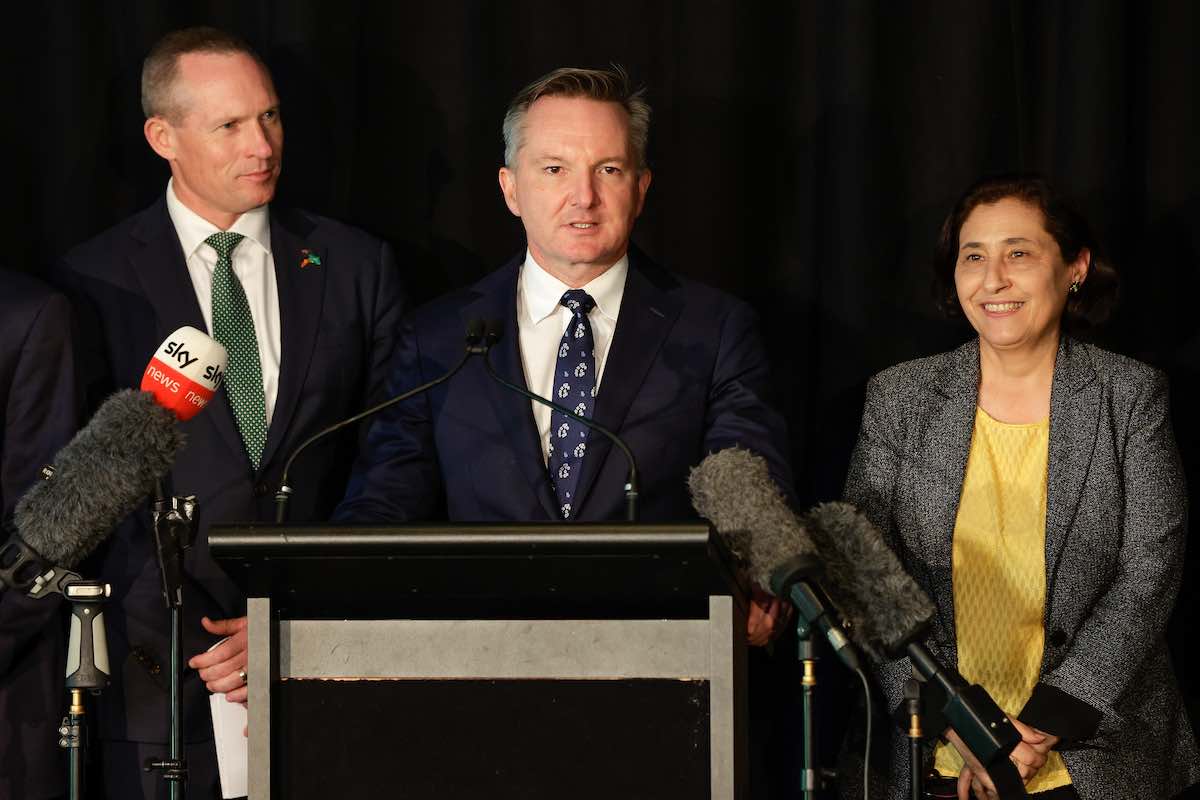While the fix to the fossil fuel energy price hyperinflation crushing millions of Australians will not be quick, building out new firmed renewable energy and modernising the grid infrastructure will trigger the decarbonisation of our economy and permanently drive Australian wholesale electricity prices down 60-70% from the 2022 levels within a decade.
Finally, the adults are back in the room.
It is brilliant to see the energy ministers of Australia – state and federal – working collectively and constructively together on a renewable energy capacity investment mechanism, with tenders to be called for and underwritten by the federal government and a floor and revenue cap almost exactly as proposed by the Smart Energy Council’s renewable energy storage proposal.
The federal government is to be applauded for leading the energy transformation after years of LNP energy policy chaos made progress impossible.
The mechanism agreed on Thursday has a key focus on shoring up the grid and triggering significant new investment in renewables, to both dramatically lower energy prices and hasten an orderly energy transition away from our over-reliance on polluting, expensive, volatile and aging coal and gas generation.
The agreement is a turning point in ensuring there is sufficient dispatchable energy capacity in our grid as it rapidly transitions.
While variable renewable energy is clearly the lowest cost source of new generation, the capacity investment mechanism should help catalyse an upsurge in zero emissions generation and associated firming capacity needed to underpin stability and reliability of the grid, including batteries, demand response management and pumped hydro storage.
Australia needed a storage capacity investment mechanism to bring financial rigour and take the risk out of new clean energy investments, and today state and federal governments have taken a critical step in that direction.
This should give a policy framework that sends a clear, bankable long-term signal to lower the risk, and hence the capital cost, of storage and zero emissions technology investment.
And importantly, the mechanism will only apply to zero emissions solutions. Angus Taylor’s ‘Coalkeeper’ capacity mechanisms plans are dead, having never progressed beyond a press release, like much of the previous government’s energy policy agenda.
While the speed and size of the new tenders is yet to be detailed, climate and energy minister Chris Bowen did reference accelerating $10 billion of new investment for 6GW of firmed renewables capacity.
This is a good first step to crowding in private capital investment in renewables at the speed and scale required, given the hyperinflation of fossil fuels smashing Australians today, and the accelerating closures of our ageing, unreliable and ultra-expensive thermal power fleet.
Importantly, today’s agreement also acknowledges the growing risks to sourcing of key energy transition inputs, such as wind turbines, modules, batteries, electrolysers, critical minerals and all the associated specialised construction equipment, as global deployment of renewables accelerates at rates way beyond what was anticipated even just a year ago, a trend made clear in the International Energy Agency’s (IEA) Renewables 2022 report this week.
This will see the states and commonwealth work together strategically on sourcing, and potentially using their collective buying capacity to underwrite local component manufacturing capacity, building jobs and investment and helping to smooth the transition in regional Australia.
The federal government’s world-leading target of 82% renewables by 2030 implies a massively ambitious, accelerated electricity sector transition (almost treble the current 34% renewable energy penetration), and a move to 95-100% decarbonisation next decade, as already articulated by the Victorian government.
We also need new policies to incentivise building out new technologies like electric vehicle-to-grid charging, and virtual power plants (VPPs), comprising distributed rooftop solar and storage, to further enhance grid reliability.
A fleet of 20 million EVs across Australia two decades from now will have a massive collective battery capacity of 1,000 gigawatt hours, so even tapping into one-tenth of that to feed into the grid would provide a huge 100 gigawatt hours storage capacity. This would leverage the sunk capital tied up in our mostly idle national car fleet into supporting the grid, and rewarding consumers in the process.
While a domestic coal and gas price cap was referenced by the energy ministers, more details will be provided following the national cabinet meeting on Friday. As we wrote earlier this week, we look forward to progress on that front.
Tim Buckley is director of Climate Energy Finance, a public interest thinktank










